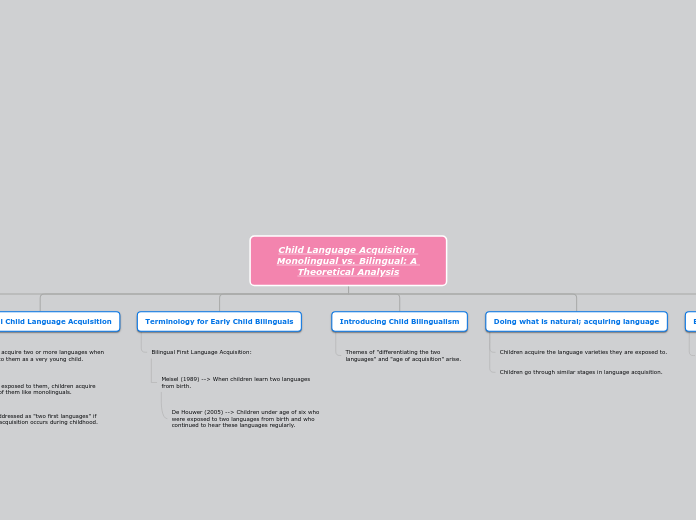Child Language Acquisition Monolingual vs. Bilingual: A Theoretical Analysis
Exposure to Language is important
Children need actual exposure to a language in use in order to develop a linguistic system.
Bilingual child is not a clone of two monolingual children.
Doing what is natural; acquiring language
Children go through similar stages in language acquisition.
Children acquire the language varieties they are exposed to.
Introducing Child Bilingualism
Themes of "differentiating the two
languages" and "age of acquisition" arise.
Terminology for Early Child Bilinguals
Bilingual First Language Acquisition:
Meisel (1989) --> When children learn two languages
from birth.
De Houwer (2005) --> Children under age of six who
were exposed to two languages from birth and who
continued to hear these languages regularly.
Bilingual Child Language Acquisition
Can be addressed as "two first languages" if
bilingual acquisition occurs during childhood.
Meaning: acquire two or more languages when
exposed to them as a very young child.
When exposed to them, children acquire
each of them like monolinguals.
Child Language Acquisition
Children acquire language
that's "highly complex and
structured system compromising
several system."
Children acquire the language
of the community they grow in
Without coaching of parents,
children tend to acquire language
from their environment.

